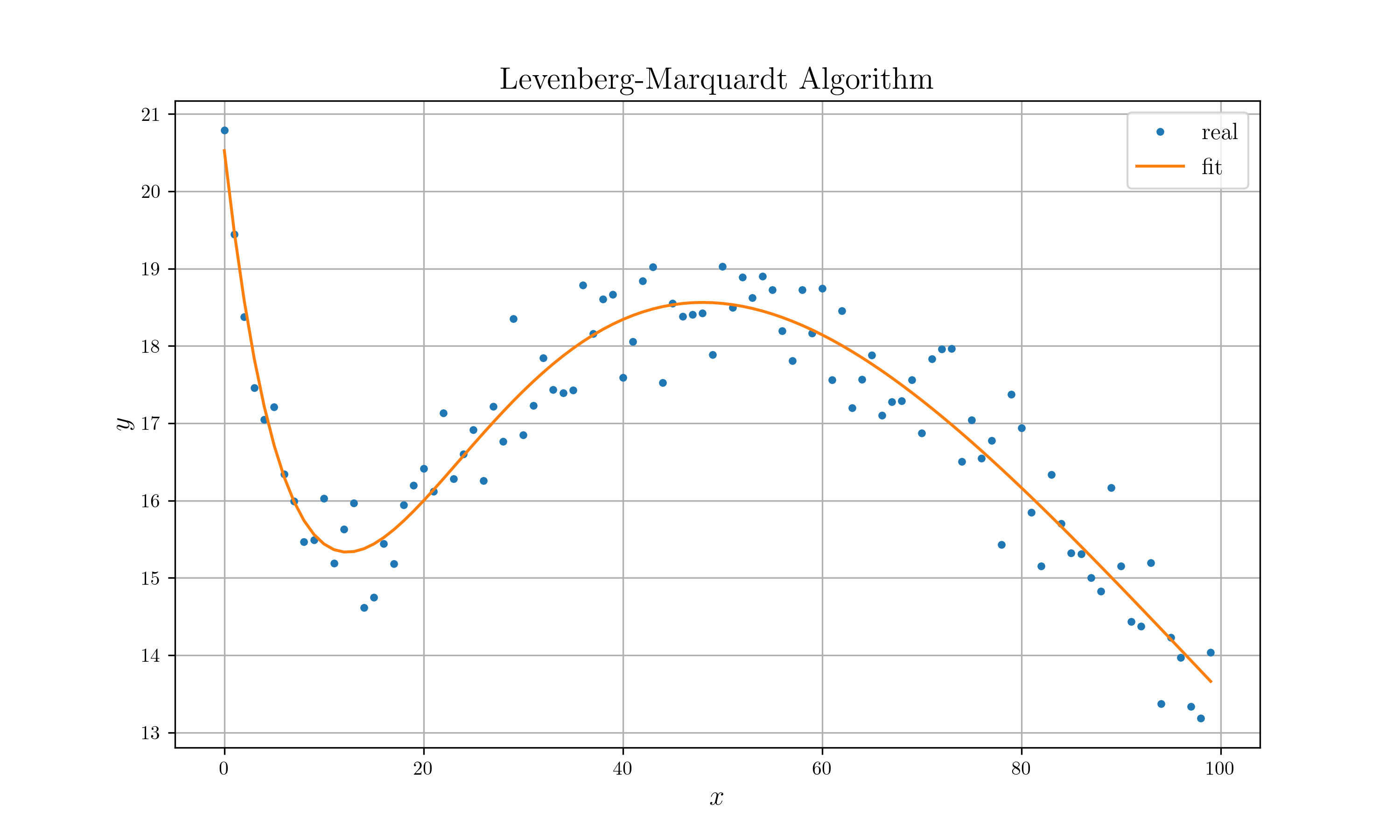

Rust numeric library contains linear algebra, numerical analysis, statistics and machine learning tools with R, MATLAB, Python like macros.
Peroxide provides two back-end options.
So, if you are familiar with unix environment (can setup BLAS environment), then you can get one of the fastest scientific computation tools. Or if you hate dependencies from fortran, C/C++ libraries, then you can get comfortable scientific computation tools.
Peroxide uses 1D data structure to describe matrix. So, it's too easy to integrate BLAS. It means peroxide guarantees perfect performance for linear algebraic computations.
Rust is so strange for Numpy, MATLAB, R users. Thus, it's harder to learn the more rust libraries. With peroxide, you can do heavy computations with R, Numpy, MATLAB like syntax.
For example,
```rust extern crate peroxide; use peroxide::*;
fn main() { // MATLAB like matrix constructor let a = ml_matrix("1 2;3 4");
// R like matrix constructor (default)
let b = matrix(c!(1,2,3,4), 2, 2, Row);
// Or use zeros
let mut z = zeros(2, 2);
z[(0,0)] = 1.0;
z[(0,1)] = 2.0;
z[(1,0)] = 3.0;
z[(1,1)] = 4.0;
// Simple but effective operations
let c = a * b; // Matrix multiplication (BLAS integrated)
// Easy to pretty print
c.print();
// c[0] c[1]
// r[0] 1 3
// r[1] 2 4
} ```
Peroxide can do many things. Refer to Covered contents.
Rust & Cargo are awesome for scientific computations. You can use any external packages easily with Cargo, not make. And default runtime performance of Rust is also great. If you use many iterations for computations, then Rust become great choice.
Corresponding to 0.14.0 (not yet released).
matplotlib for plottingcargo.toml
toml
peroxide = "0.13"
mod and re-exportf64, Dual)special craterand crateVec<f64>pickle data structurepyo3)Vec<f64>fmap : map for all elementscol_map : map for column vectorsrow_map : map for row vectorsReal trait to constrain for f64 and DualNumber structure to unify f64 and Dualrand cratespecial cratepyo3 & matplotlib```rust
extern crate peroxide; extern crate inlinepython; use peroxide::*; use inlinepython::python;
fn main() {
// Initial condition
let init_state = State::
let mut ode_solver = ExplicitODE::new(test_fn);
ode_solver
.set_method(ExMethod::RK4)
.set_initial_condition(init_state)
.set_step_size(0.01)
.set_times(1000);
let result = ode_solver.integrate();
let x = result.col(0);
let y = result.col(1);
// Plot (Thanks to inline-python)
python! {
import pylab as plt
plt.plot('x, 'y)
plt.show()
}
}
// dy/dx = (5x^2 - y) / e^(x+y)
fn test_fn(st: &mut State
```rust extern crate peroxide; use peroxide::*;
fn main() {
let init_state = State::
let mut ode_solver = ExplicitODE::new(test_fn);
ode_solver
.set_method(ExMethod::RK4)
.set_initial_condition(init_state)
.set_step_size(0.01)
.set_times(1000);
let result = ode_solver.integrate();
let x = result.col(0);
let y = result.col(1);
// Plot (using python matplotlib)
let mut plt = Plot2D::new();
plt.set_domain(x)
.insert_image(y)
.set_title("Test Figure")
.set_fig_size((10, 6))
.set_dpi(300)
.set_legends(vec!["RK4"])
.set_path("example_data/test_plot.png");
plt.savefig();
}
fn test_fn(st: &mut State
```rust extern crate peroxide; use peroxide::*;
fn main() {
let init_state = State::
let mut ode_solver = ExplicitODE::new(test_fn);
ode_solver
.set_method(ExMethod::RK4)
.set_initial_condition(init_state)
.set_step_size(0.01)
.set_stop_condition(stop) // Add stop condition
.set_times(1000);
let result = ode_solver.integrate();
let x = result.col(0);
let y = result.col(1);
let mut plt = Plot2D::new();
plt.set_domain(x)
.insert_image(y)
.set_title("Test Figure")
.set_fig_size((10, 6))
.set_dpi(300)
.set_legends(vec!["RK4"])
.set_path("example_data/test_plot.png");
plt.savefig();
}
fn test_fn(st: &mut State
fn stop(st: &ExplicitODE) -> bool { let y = &st.get_state().value[0]; (*y - 2.4).abs() < 0.01 } ```

```rust extern crate peroxide; use peroxide::*;
// x : n x L // xb: n x (L+1) // v : (L+1) x M // a : n x M // ab: n x (M+1) // w : (M+1) x n // wb: M x N // y : n x N // t : n x N // dh: n x M // do: n x N
fn main() { let v = weightsinit(3, 2); let w = weightsinit(3, 1);
let x = ml_matrix("0 0; 0 1; 1 0; 1 1");
let t = ml_matrix("0;1;1;0");
let y = train(v, w, x, t, 0.25, 5000);
y.print();
}
fn weights_init(m: usize, n: usize) -> Matrix { rand(m, n) * 2f64 - 1f64 }
fn sigmoid(x: f64) -> f64 { 1f64 / (1f64 + (-x).exp()) }
fn forward(weights: Matrix, inputbias: Matrix) -> Matrix { let s = inputbias * weights; s.fmap(|x| sigmoid(x)) }
fn add_bias(input: Matrix, bias: f64) -> Matrix { let b = matrix(vec![bias; input.row], input.row, 1, Col); cbind(b, input) }
fn hide_bias(weight: Matrix) -> Matrix { weight.skip(1, Row) }
fn train( weights1: Matrix, weights2: Matrix, input: Matrix, answer: Matrix, eta: f64, times: usize, ) -> Matrix { let x = input; let mut v = weights1; let mut w = weights2; let t = answer; let xb = add_bias(x.clone(), -1f64);
for _i in 0..times {
let a = forward(v.clone(), xb.clone());
let ab = add_bias(a.clone(), -1f64);
let y = forward(w.clone(), ab.clone());
// let err = (y.clone() - t.clone()).t() * (y.clone() - t.clone());
let wb = hide_bias(w.clone());
let delta_o = (y.clone() - t.clone()) * y.clone() * (1f64 - y.clone());
let delta_h = (delta_o.clone() * wb.t()) * a.clone() * (1f64 - a.clone());
w = w.clone() - eta * (ab.t() * delta_o);
v = v.clone() - eta * (xb.t() * delta_h);
}
let a = forward(v, xb);
let ab = add_bias(a, -1f64);
let y = forward(w, ab);
y
} ```
```rust extern crate peroxide; use peroxide::*;
fn main() {
let noise = Normal(0., 0.5);
let ptrue: Vec
let mut opt = Optimizer::new(data, f);
let p = opt
.set_init_param(p_init)
.set_max_iter(100)
.set_method(LevenbergMarquardt)
.optimize();
p.print();
opt.get_error().print();
}
fn f(domain: &Vec

To see RELEASES.md
To see TODO.md